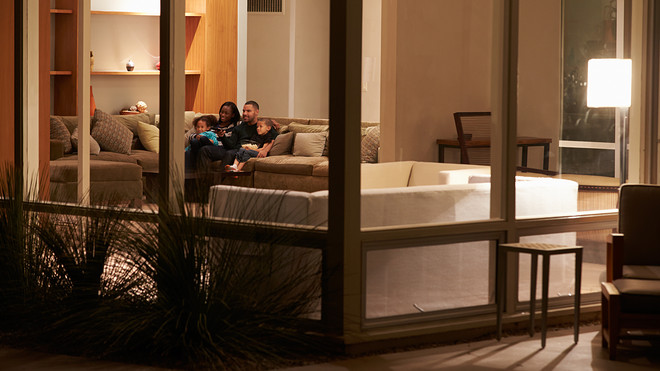ABC del Bienestar – In a world increasingly shaped by rising living costs, aging populations, and changing family values, one concept has suddenly gone viral: intergenerational homes. Once viewed as a traditional or even outdated arrangement, this model of multi-age living is gaining traction as a modern solution to some of today’s most pressing societal issues. From TikTok influencers sharing their life with grandparents, to architecture firms designing homes with aging parents in mind, the intergenerational trend is not only back—it’s booming.
So what makes intergenerational homes more than just a nostalgic idea? And more importantly, could they truly be the future of comfortable, connected, and sustainable living?
What Are Intergenerational Homes?
Intergenerational homes are living spaces where two or more generations—typically grandparents, parents, and children—reside under one roof. These arrangements may take different forms, from single-family homes with multiple master suites to duplex-style residences or even clustered mini-houses on one property.
The goal is simple: to provide a supportive, shared environment where older adults, working-age adults, and young children coexist with mutual benefit. These homes often feature design elements like accessible entrances, private wings, sound-insulated rooms, and communal kitchens or gardens to accommodate different needs while preserving independence.
This approach contrasts with the more isolated nuclear family or senior living models that have dominated much of Western housing culture for decades.
Why the Trend Is Going Viral Now
Several converging factors have propelled intergenerational homes into the spotlight in 2024 and beyond:
Economic Pressure: With inflation, housing shortages, and rising costs for both childcare and eldercare, families are looking for smarter ways to pool resources. Sharing a home can reduce costs by thousands of dollars annually.
Elderly Care Crisis: Nursing homes and assisted living facilities are overwhelmed or unaffordable for many. Intergenerational homes offer an alternative where elderly family members can age in place with dignity and daily support.
Childcare Demand: Young families struggling with the high cost of daycare often find relief when grandparents are around to help with children, transportation, or household responsibilities.
Emotional Health: Loneliness is a growing public health concern, particularly among seniors. Living with family can dramatically improve mental wellness and reduce the risk of depression across all generations.
Cultural Values: In many parts of Asia, Latin America, and Africa, multigenerational living is already the norm. Now, Western countries are increasingly recognizing the benefits of such arrangements.
Design Innovations in Intergenerational Living
Modern architecture and real estate development are quickly catching up with the intergenerational trend. Smart home technology also plays a key role in making intergenerational homes practical. Devices such as fall detectors, voice assistants, and security cameras offer peace of mind to adult children caring for aging parents.
Additionally, soundproofed barriers and customizable layouts allow for both privacy and connection—so that different age groups can live together comfortably without stepping on each other’s toes.
The Social Impact of Intergenerational Homes
The benefits go beyond convenience or economics. Studies show that children raised in intergenerational homes often develop stronger social skills and greater empathy. They benefit from the wisdom and attention of elders while growing up in a more diverse emotional environment.
For seniors, these homes provide a sense of purpose and belonging that is often lost in isolated living arrangements. Daily interactions with younger generations can even slow cognitive decline and improve memory retention.
Moreover, family bonds are strengthened when generations interact daily instead of just during holidays or emergencies.
Communities are beginning to notice the societal impact too. With fewer people depending on institutional care, there’s reduced strain on public health systems. In cities experimenting with co-housing models, crime rates have gone down and neighborhood engagement has increased.
Challenges to Consider
Despite the positives, intergenerational homes are not without challenges. Differences in routines, values, or personal space needs can lead to tension. Not every family is well-suited to such close proximity.
A Reimagined Future of Living
What was once seen as an old-fashioned way of life is now being hailed as a progressive model for the future. Intergenerational homes offer a sustainable, emotionally fulfilling, and economically wise alternative to modern housing challenges.



